Submicron Tungsten Powder Prepared from Ammonium Paratungstate by Circulatory Oxidization-Reduction Method
- Details
- Category: Tungsten Information
- Published on Tuesday, 22 December 2015 14:16
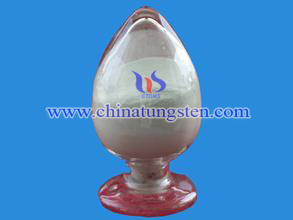
| Tungsten Supplier: Chinatungsten Online www.chinatungsten.com | Tel.: 86 592 5129696; Fax: 86 592 5129797;Email:sales@chinatungsten.com |
| Tungsten News & Prices, 3G Version: http://3g.chinatungsten.com | Molybdenum News & Molybdenum Price: http://news.molybdenum.com.cn |
Tungsten copper electrode densification problems
- Details
- Category: Tungsten Information
- Published on Monday, 21 December 2015 17:25
Under normal infiltration, sintering conditions between tungsten and copper are two metals are immiscible and invasive low, which also makes the two powder densification process by certain obstacles, making it difficult to achieve high densification and the desired structure. But only by increasing the pressure and sintering temperature, although to some extent, can increase the density of the final product, but brought a lot of problems in the process conditions and comprehensive performance assurance, the following aspects in general:
1. Densification degree and rate
Actually, the densification problems can be specifically divided into densification degree, rate and the conditions. In the practical applications, related density is the measuring index of densification, which should be higher than 98%. In addition, reasonable densification condition is also a direction of research. Viewed from the mechanism of metal powder sintering, the basic conditions for achieving higher densification as follow: First of all, the solid phase can be partially dissolved in the liquid phase. Then the contact angle of solid and liquid phase should be zero. Finally, rearrangement of liquid particles independent should not exceed 35% of the volume of sintering.
For tungsten copper electrode in W-Cu system at regular infiltration and sintering conditions, the two-phase mutual infiltration is poor, tungsten copper in the liquid is almost insoluble (10-5atm%, at 1200 ℃ under), the precipitate was dissolved and particulate substances such rounding migration mechanism can not occur in the liquid phase sintering densification process, relying only under particle rearrangement also want action undertaken. Thus, the densification rate is relatively slow, a relatively low degree of densification. Conventional infiltration sintering and liquid phase sintering simply can not meet the 98% relative density.
By increasing the molding pressure to increase the green density can be achieved to improve the final density of purposes, but only within a certain pressure range and a limited role, unduly increasing the pressure has caused loss compacts stratification and molding tool wastage. Another method is to increase the sintering temperature until the 1400-1500 ℃, density can be significantly improved, but apparently sintering conditions require too harsh and severe size distortion at high temperatures, liquid copper excessive overflows components shifted. Therefore, improving the sintering activation of system by shortening the distance of powder particles is the most effective method of densification improving and rate and simplifying the requirements.
| Tungsten Copper Supplier: Chinatungsten Online tungsten-copper.com | Tel.: 86 592 5129696; Fax: 86 592 5129797;Email:sales@chinatungsten.com |
| Tungsten News & Prices, 3G Version: http://3g.chinatungsten.com | Molybdenum News & Molybdenum Price: http://news.molybdenum.com.cn |
Nano Tungsten Copper Electrode Research
- Details
- Category: Tungsten Information
- Published on Monday, 21 December 2015 17:24
The granularity and uniformity of tungsten and copper powder has an effect on tungsten copper electrode sintering, and the decreasing granularity will improve the comprehensive properties of materials, such as the density, the hardness, the electric and thermal conductivity. Theoretically, powder metallurgy (PM) uses metal powder (or metallic oxide powder) as raw materials, after compacting and sintering, the granularity of powder is coarser. Compared with PM, nano tungsten copper has higher surface energy, which atoms move by higher interfacial energy, shrink the small pores in sintering process and in case of the diffusion of pores. Therefore, nano tungsten copper research is beneficial for the densification at lower temperature.
Although the process of nano tungsten copper is similar to the traditional PM, which can be divided into preparation, compacting and sintering, due to the characteristic of nano particle, there are some differences between them. Overall, the most widely used process of nano tungsten copper main are Sol-Gel method, Metal Alloying (MA), Mechano-Thermo-chemical Process, spray drying and so on.
Metal Alloying (MA), uses high energy ball milling for tungsten copper mixed powder grinding, achieves the nano powder (the granularity is about 20nm-30nm). Then compacts the blank by the nano powder and sintering in hydrogen atmosphere at 1000℃, nano tungsten copper with high related density can be achieved.
The so-called sol - gel (Sol-Gel) is the use of compounds with high chemical composition as the precursor in the liquid phase under these uniformly mixed materials, hydrolysis and condensation reactions to form a stable transparent sol in solution sol particles by aging between slow polymerization to form a three-dimensional network structure of the gel, the gel network between full solvent loses fluidity to form a gel. After drying, sintering and solidifying, sol can be produced with molecular or nano substructure. At the academic front, some researchers succeed in preparing MoW and CuW high-performance powder. However, this kind of process has some shortcomings, such as the content of water vapor and impurities is difficult to control in the process of hydrogen reduction, which these problems will influence the later sintering process.
Mechano-Thermo-Chemical process, uses ammonium paratungstate and copper nitrate as raw materials to prepare a mixed solution, and then spray drying the mixed solution to obtain a metal powder mixture through a rotary atomizer and the subsequent drying process of the precursor, the precursor of combustion, the formation of tungsten copper W-Cu composite oxide powder, then milled oxide powder and two-step hydrogen reduction, thereby preparing nano-tungsten-copper composite powder.
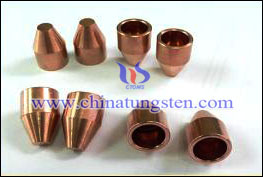
| Tungsten Copper Supplier: Chinatungsten Online tungsten-copper.com | Tel.: 86 592 5129696; Fax: 86 592 5129797;Email:sales@chinatungsten.com |
| Tungsten News & Prices, 3G Version: http://3g.chinatungsten.com | Molybdenum News & Molybdenum Price: http://news.molybdenum.com.cn |
The Coarse Grain Tungsten Powder Reduced by Ammonium Paratungstate at Medium Temperature
- Details
- Category: Tungsten Information
- Published on Monday, 21 December 2015 16:25
The coarse-grained tungsten powder was reduced by using ammonium paratungstate(APT) as raw materials and additive Li,Na salt at 1000 ℃ wet hydrogen condition. The morphology,phase composition and size distribution of coarse-grained tungsten powder were characterized by using SEM,XRD and laser particle size analyzer. The effect of temperature and time of reduction,types and content of Li and Na salt on the grain size of tungsten powder was studied.The result shows that the coarse-grained tungsten powder can be reduced directly using APT as raw materials and Li2CO3 as additive under the wet hydrogen condition at 1000℃ for 180min,which has well liquidity and integrated crystal,the average particle size is above 40μm.
| Tungsten Supplier: Chinatungsten Online www.chinatungsten.com | Tel.: 86 592 5129696; Fax: 86 592 5129797;Email:sales@chinatungsten.com |
| Tungsten News & Prices, 3G Version: http://3g.chinatungsten.com | Molybdenum News & Molybdenum Price: http://news.molybdenum.com.cn |
Production Process Parameters of High-purity Ammonium Paratungstate by Ammonia Dissolving
- Details
- Category: Tungsten Information
- Published on Monday, 21 December 2015 15:51
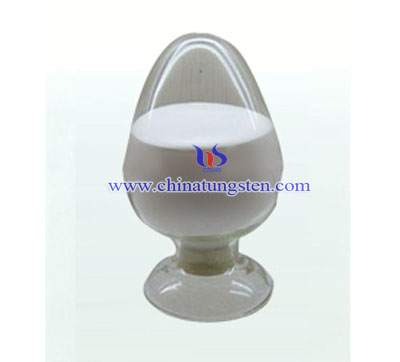
| Tungsten Supplier: Chinatungsten Online www.chinatungsten.com | Tel.: 86 592 5129696; Fax: 86 592 5129797;Email:sales@chinatungsten.com |
| Tungsten News & Prices, 3G Version: http://3g.chinatungsten.com | Molybdenum News & Molybdenum Price: http://news.molybdenum.com.cn |
Liquid-Film Method for Ammonium Paratungstate Production II
- Details
- Category: Tungsten Information
- Published on Friday, 18 December 2015 17:49

| Tungsten Supplier: Chinatungsten Online www.chinatungsten.com | Tel.: 86 592 5129696; Fax: 86 592 5129797;Email:sales@chinatungsten.com |
| Tungsten News & Prices, 3G Version: http://3g.chinatungsten.com | Molybdenum News & Molybdenum Price: http://news.molybdenum.com.cn |
Tungsten Alloy Ballast WeightsⅡ
- Details
- Category: Tungsten Information
- Published on Friday, 18 December 2015 17:46
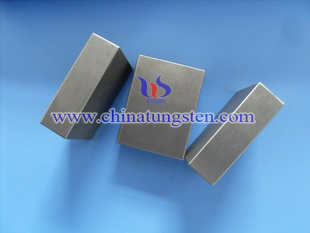
| Tungsten Alloy Supplier: Chinatungsten Online www.tungsten-alloy.com | Tel.: 86 592 5129696; Fax: 86 592 5129797;Email:sales@chinatungsten.com |
| Tungsten News & Prices, 3G Version: http://3g.chinatungsten.com | Molybdenum News & Molybdenum Price: http://news.molybdenum.com.cn |
Liquid-Film Method for Ammonium Paratungstate Production I
- Details
- Category: Tungsten Information
- Published on Friday, 18 December 2015 17:45
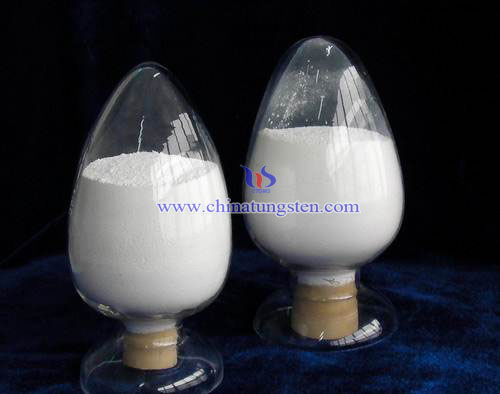
| Tungsten Supplier: Chinatungsten Online www.chinatungsten.com | Tel.: 86 592 5129696; Fax: 86 592 5129797;Email:sales@chinatungsten.com |
| Tungsten News & Prices, 3G Version: http://3g.chinatungsten.com | Molybdenum News & Molybdenum Price: http://news.molybdenum.com.cn |
Tungsten Alloy Ballast WeightsⅠ
- Details
- Category: Tungsten Information
- Published on Friday, 18 December 2015 17:42
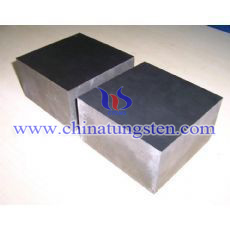
| Tungsten Alloy Supplier: Chinatungsten Online www.tungsten-alloy.com | Tel.: 86 592 5129696; Fax: 86 592 5129797;Email:sales@chinatungsten.com |
| Tungsten News & Prices, 3G Version: http://3g.chinatungsten.com | Molybdenum News & Molybdenum Price: http://news.molybdenum.com.cn |
Nano Tungsten Copper Mixed Powder of Tungsten Copper Electrode Preparation
- Details
- Category: Tungsten Information
- Published on Friday, 18 December 2015 16:57
Compared with traditional powder metallurgy (PM), tungsten copper electrode nano composite material including powder milling, compacting and sintering process, but due to the characteristics of nano particles, there are some differences between traditional powder metallurgy and nano tungsten copper mixed powder preparation.
1. Direct mixing
The nano tungsten powder and copper powder directly mixed according to a certain proportion, which has many methods, such as ultrasonic mixing, mechanical stirring, ball milling and so on. The mixing process should at the inert gas atmosphere, otherwise the nano powder will be oxidized easily.
2. Mechanical alloying (MA)
MA refers to the W, Cu metal powder stirring energy ball milling, high energy planetary ball mill or rotor, while using inert gas to prevent oxidation of the powder during the milling process. In the process of mechanical alloying, collision with a metal ball leaving the powder on powder body ingot refining, and mixing the powder collision between recurrent, so that each element powder blended to achieve a very uniform degree and form of nano crystalline supersaturated solid solution and amorphous phase. In addition, the facility and conditions it required is simple, which is the most widely studied by the researchers and scholars in the world.
3. Composite powder coreduction
Owing to tungsten oxide and copper oxide are easily reduced to the metal by hydrogen (H2), Uses composite powder reduction to prepare a uniform distribution of tungsten-copper composite powders has been one of the hot researches. n recent years, researchers have found that using a special co-reduction method can be directly sintered into dense tungsten-copper composite powder having a uniform fine grain structure, there are some applied to the preparation of parts for industrial use.
There are two methods to the powder preparing, one is that tungsten oxide and copper oxide powder are mixed with water pulping, grinding, spray drying, and reduction with hydrogen was obtained spherical powder, powder of tungsten phase and a copper phase distribution more uniform, wherein the particle size of the tungsten 1-3μm. Then the spherical powder can be pressed and sintered to obtain a dense, fine-grained tungsten-copper composite material. Another is uses ammonium metatungstate reacted with copper oxide complex oxide, copper which is about 26%. Cu is the core, which tungsten grain surrounded by. Although this tungsten-copper composite powder pressing and sintering the resulting tungsten copper material compared to infiltration method can be better thermal conductivity properties as well as the overall performance, but the process is relatively complex, low productivity shortcomings.
| Tungsten Copper Supplier: Chinatungsten Online tungsten-copper.com | Tel.: 86 592 5129696; Fax: 86 592 5129797;Email:sales@chinatungsten.com |
| Tungsten News & Prices, 3G Version: http://3g.chinatungsten.com | Molybdenum News & Molybdenum Price: http://news.molybdenum.com.cn |



 sales@chinatungsten.com
sales@chinatungsten.com